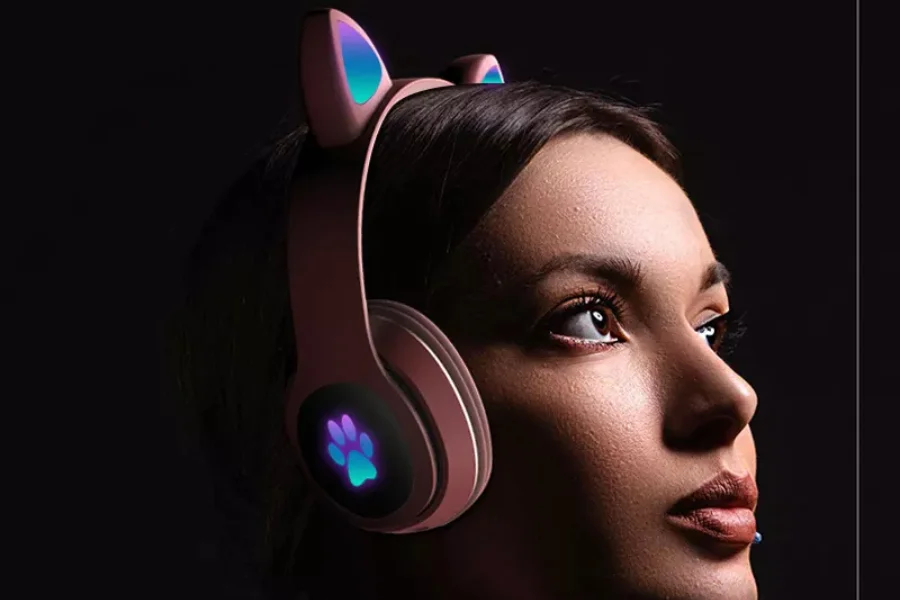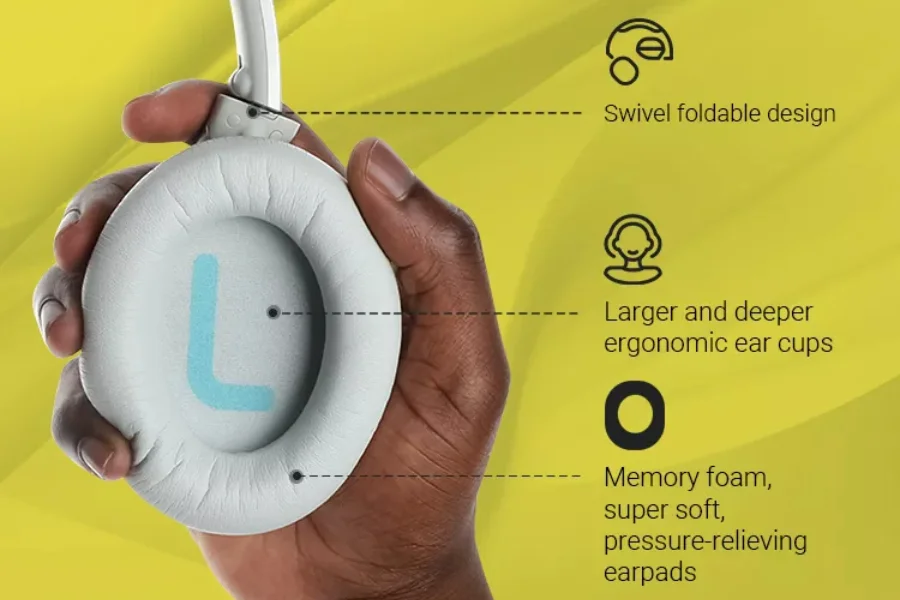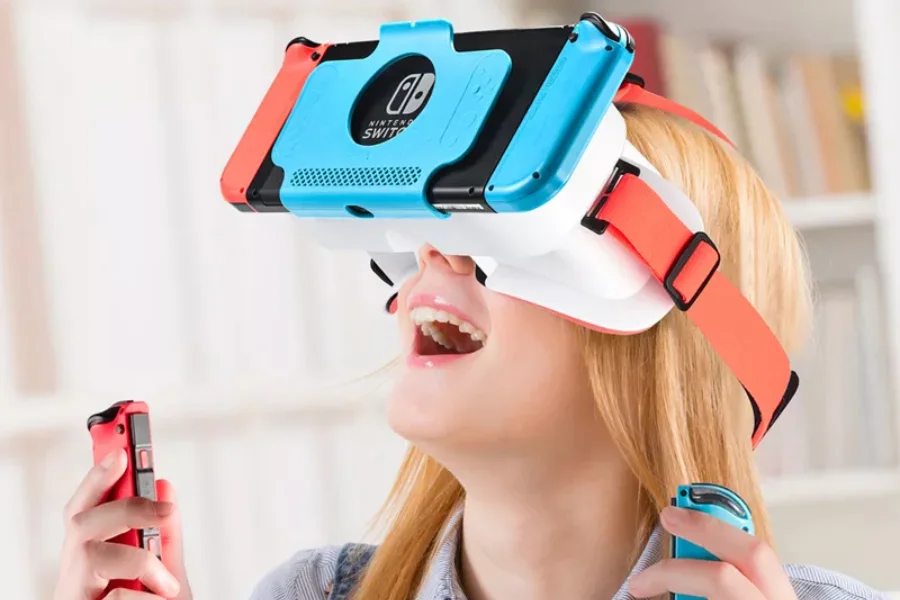What would you do if you were attending a regular public speaking event but realized regrettably that you were unable to hear the speaker clearly? To fix the issue, Nathaniel Baldwin, who had a similar predicament, literally took matters into his own hands and went on to create the first headphone in 1910.
More than a century passed now and although the headphones today still feature similar initial components of the first headphone—a headband and two cups at the sides—, both the sound quality and design have improved significantly. Read on to find out the headphone market growth to date, the popular headphones to target, and the related wholesale business opportunities.
Table of Contents
How popular are headphones?
Guide on how to choose the right headphones
Popular headphones to target
Crystal clear quality
How popular are headphones?
How popular are headphones? To answer this question, let’s first begin by examining the differences between headphones and a few other audio output devices. Even though the term headphone is often used as a blanket term to describe other similar audio output devices, there are essentially some distinctive differences between headphones, headsets, and earphones.
A headphone comes with two ear cups and a headband that fits on top of your head. Meanwhile, headsets are simply referring to headphones with speakers, whereas earphones are used by slipping them directly into the ear canal. The latest global statistics that cover all these three types of commonly available audio output devices indicated that the headphone market is growing steadily and healthily.
The Straits Research reported that the worldwide headphone market is expected to grow at an aggressive compound annual growth rate (CAGR) of 20.13%, increasing by more than US$100 billion from a valuation of US$ 24.81 billion in 2021 to US$ 129.26 billion in 2030. Among the items that fuel this growth, wireless headphones such as those with Bluetooth connectivity to different devices are lauded as the future driving force that can bring forth plenty of upcoming future opportunities. This is thanks to their wide range of new prospects, more sophisticated features, and versatile usability.
At an estimation of about US$ 6 billion, the U.S. represents the biggest headphone market in the world with about 27.9% of the worldwide market share. This is followed by China, which is anticipated to hit a similar market size of US$ 5.6 billion by 2026, representing a CAGR of 10.8%.
Guide on how to choose the right headphone
Technical specifications
The primary role of a headphone, like that of all other sound system devices, is to provide users with high-quality sound. It is hence essential for wholesalers to have a basic understanding of the technical specification related to a headphone’s sound quality. Bass level, frequencies, noise cancellation, sensitivity, and impedance are some of the most fundamental features that have an impact on the sound quality of a headphone. Let’s get a rudimentary grasp of each of them.
Even though it is often arguable whether a real audiophile should be pro-bass or anti-bass, the favorite music of most people is deep bass or bass-heavy, and this statement comes with scientific support: the human’s brain actually finds it easier to process low-bass music compared to high-pitched sounds. To effectively identify the bass level of a headphone, one needs to examine its frequency range and frequency response specifications.
A frequency specification of 20Hz-25kHz (+/-3dB), for example, indicates that the lowest (deepest) bass a headphone can deliver is 20Hz. And anything from 1Hz up to 80Hz is considered low bass or bass-heavy. The upper bass normally ranges up to 250Hz only, and 25kHz here refers to the highest frequency the headphone is capable of reproducing. Headphones with higher frequency ranges can play more detailed sounds.
+/-3dB suggests the reproduction accuracy deviation is at around 6dB (+3dB to -3dB), which is generally considered the lowest deviation limit that is detectable by people and closest to flat frequency response. Basically, a flatter frequency response refers to a more balanced input and output sound—a purer, close to the original sound delivery experience.
The sensitivity of a headphone, on the other hand, measures the loudness of a headphone in dB. While the recommended level is between 60-85dB, it is common to find headphones with a sensitivity level of around 100dB and above. The sensitivity of a headphone, at the same time, highlights the importance of noise cancellation. An active noise cancellation feature helps to lower or clear the undesired background noise, thereby improving the sound quality too.
Impedance level is another common spec that headphone buyers should look out for since it measures a headphone’s resistance to the flow of alternating current (AC) in ohms (Ω). 32 ohms is a common standard impedance nowadays while many high-end headphones feature around 250 ohms—which is meant for studio level. As a general rule of thumb, anything beyond 100 ohms is better but also at higher pricing levels and often requires a separate amplifier in view of its higher voltage needs.
Personalization and other miscellaneous factors
Depending on the preferred use case, people may opt for different styles and designs of headphones. Generally, headphones with modern, sleek designs and lightweight are preferred. Over-ear headphones and on-ear headphones are the two most basic designs of headphones. In terms of size and weight, over-ear headphones clearly take up more space except for foldable models and are normally heavier. They can however provide a more immersive listening experience due to the natural ambient noise isolation design.
Ultimately, battery life is one of the most important features to take note of when it comes to the selection of Bluetooth headphones for a more comfortable and convenient user experience. While most headphones can last for about 12 hours per single charge, it is getting more common to find headphones that last 30-40 hours per charge.
Another feature that is related to the battery life is the charging methods that a headphone can provide. It is definitely a plus to have a wireless charging headphone as this is not only the most updated technology but also a very convenient way to get the headphone charged since it does not involve any cable at all, providing complete freedom from cabling compatibility and length issues.
Popular headphones to target
Sound quality conscious
It is no coincidence that excellent sound quality specifications are the focus of a good part of the selection criteria above. According to a 2019 report by Statista, the sound quality of a headphone turned out to be the most important feature that could influence the purchasing decision of U.S. consumers, with 75% of the survey respondents agreeing to that.
Similar to the headphone featured in the picture below, an over-ear headphone with active noise canceling function that promises deep accurate bass and supports 25-35 hours of playtime per single charge may offer a realistic surround audio experience for any headphone lover. Aside from noise-canceling headphones, headphones that pride themselves on Hi-Fi audio quality or headphones that support super bass are also among the examples that strive for the ultimate sound quality.

Meanwhile, speaking about high-quality sound, wholesalers can always aim at audiophiles who prioritize sound quality above all other things with audiophile-targeted headphones. Although such headphones typically position themselves as high-end and luxurious headphones and fetch a higher price tag, there are wholesale headphones for audiophiles offering some very good prices too.
Comfort level
It may not come as a surprise that, to most U.S. consumers, comfort level is the second most important consideration when choosing a headphone. Fortunately, there are quite a few ways to identify comfortable headphones, and they are all centered around the type of material and design for ear pads.
As shown in the picture below, a headphone with a pair of memory foam (also known as memory foam sponge headphone) ear pads is designed to enable a secure and personalized fit with the body-heat activated foam. It adapts and molds to the user’s ear to generate maximum comfort.

In the meantime, headphones with leather earpads, whether made of protein leather or simply some soft leather material, are normally lightweight, comfortable to wear, and sweat-proof. In fact, for those who are seeking total comfort, an earphone that is built-in on a sleep mask may provide the ultimate comfiness while resting.
Niche oriented

While most of us have at least one hobby, it is not uncommon for people to seek ways to enjoy multiple hobbies simultaneously. For example, a sports lover may love to combine his or her music-listening hobby together with a jogging or even rock-climbing session. Such users may find bone conduction headphones most useful since it does not block the ear canal to keep them alert of their surroundings while exercising.
Besides being a great help for sports and music lovers, bone conduction headphones are the ideal design for people with hearing aids or who have a weak hearing. That is to say, bone-conduction headphones alone are capable of serving two niche markets: athletes and people with impaired hearing.
Indeed, many headphone manufacturers successfully launched products targeting different niche markets such as this sporty earphone with IPX8 standard, which accentuated its waterproof ability for any swimming needs. Furthermore, a sporty bone conduction headphone with IPX8 support may be able to widen its market target to include swimmers as well, on top of other common sports activities.
And the good news for anyone who is targeting niches is that, since technology is constantly evolving, the emergence of new trends brought by technology promotes greater business opportunities. The gaming industry is one such good example and many gamer headphones have since emerged with new functions added from time to time.
The recent breakthrough in virtual reality (VR) creates another niche market that has successfully catalyzed the production of headphones specialized for VR. At the same time, the advancement in technology also made the invention of up to 100-hour play time headphones possible, perfect for users who need to stay outdoors or out of power for days.
Crystal clear quality
The popularity of headphones has increased dramatically in view of their ever-improving new features and flexible usage. Major sound quality specifications such as bass enhancement, frequencies, noise cancellation, sensitivity, and impedance are among the top considerations for wholesalers when sourcing high-quality headphones.
Other personal preferences such as headphones styles, headphones design, size, and weight as well as the total hours of battery life should also be taken into consideration. To put it concisely, the three popular headphone categories that wholesalers should pay attention to are great sound quality headphones, comfortable headphones, and some niche-oriented headphones. For additional suggestions on wholesale sourcing and business ideas, read more on Alibaba Reads now.




